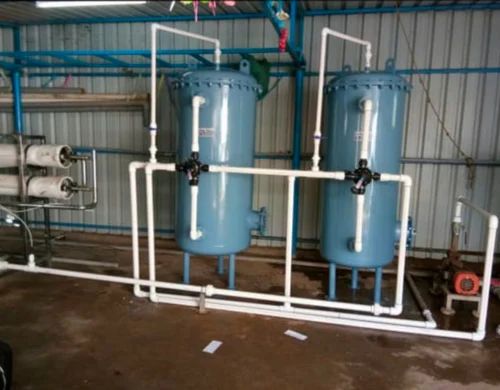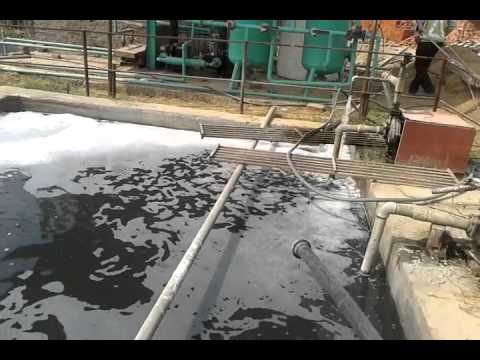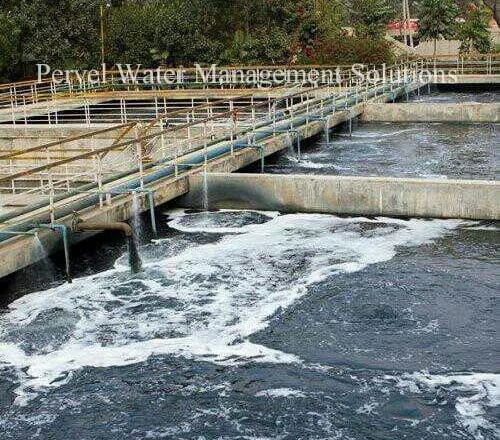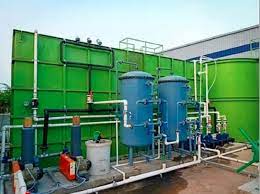Our projects Effluent Treatment Plant or ETP for Textile Industry
. Effluent Treatment Plant | Importance of ETP on Textile Industries:
ETP or Effluent Treatment Plant is the most effective and technically advanced treatment system which is designed to treat effluent or waste generated from various establishments like industries etc. The various components of the ETP will depend on the characteristics of the effluent i.e. depending on the type of effluent is to be processed. There are different types of ETPs are available depending on the quality and quantity of the effluent. Textile industry generates huge volume of wastewater which varies greatly in composition and containing various chemicals used in dyeing, printing, and various other processes. Discharging of untreated effluent from textile industries is highly harmful to the natural environment, causing pollution to nearby water and soil. To get rid of this problem, an ETP or effluent treatment plant plays an important role in textile or garment industries by protecting environment from the harmful effect of wastewater.


2. Treatment process sequence involved in ETP for Textile industry:
The untreated textile wastewater from different sections consists of high levels of TSS, dyes, chemicals & auxiliaries, metal toxicants and BOD which must be treated before they are discharged to environment. When wastewater passes through the ETP, pollutants are removed and the quality of the water is improved to an acceptance/standard level, allowing for final discharge to the environment without any risk. Effluent Treatment Plant | Importance of ETP on Textile Industries:
ETP or Effluent Treatment Plant is the most effective and technically advanced treatment system which is designed to treat effluent or waste generated from various establishments like industries etc. The various components of the ETP will depend on the characteristics of the effluent i.e. depending on the type of effluent is to be processed. There are different types of ETPs are available depending on the quality and quantity of the effluent.
Textile industry generates huge volume of wastewater which varies greatly in composition and containing various chemicals used in dyeing, printing, and various other processes. Discharging of untreated effluent from textile industries is highly harmful to the natural environment, causing pollution to nearby water and soil. To get rid of this problem, an ETP or effluent treatment plant plays an important role in textile or garment industries by protecting environment from the harmful effect of wastewater.


Annual Maintenance Contract (AMC) for an Effluent Treatment Plant (ETP) is a service agreement between the owner or operator of the ETP and a maintenance service provider. The purpose of an AMC is to ensure that the ETP operates efficiently, effectively, and in compliance with environmental regulations throughout the year. This type of contract helps in minimizing downtime, preventing unexpected breakdowns, and maintaining the overall performance of the ETP. Here are some key considerations for an ETP AMC:Scope of Services: Clearly outline the scope of maintenance services to be provided under the contract. This can include regular inspections, preventive maintenance, corrective maintenance, emergency repairs, and spare parts replacement.
Maintenance Schedule: Define the frequency of maintenance visits and the tasks to be performed during each visit. For example, monthly, quarterly, or semi-annual visits might be necessary, depending on the complexity and criticality of the ETP.
Preventive Maintenance: Detail the specific preventive maintenance tasks that will be carried out during each visit. This could include cleaning, lubrication, calibration, sensor checks, and overall system performance assessments.
Corrective Maintenance: Specify how the service provider will respond to and address unexpected breakdowns or malfunctions. This might involve response times, troubleshooting procedures, and repair protocols.
Spare Parts: Outline the responsibility for procuring and providing spare parts required for maintenance and repairs. This can include details about sourcing, pricing, and lead times for spare parts. Reporting and Documentation: Specify the format and frequency of maintenance reports that the service provider will provide after each visit. These reports should detail the work performed, observations made, any issues detected, and recommendations for improvements.
Performance Metrics: Define key performance indicators (KPIs) that will be used to evaluate the effectiveness of the maintenance services. This could include metrics related to system uptime, efficiency, compliance, and overall operational performance.
Emergency Support: Clarify the service provider's availability for emergency support outside of regular maintenance visits. Ensure that there's a mechanism for quick response and resolution in case of critical issues.
Contract Duration: Specify the duration of the AMC, whether it's for a year or multiple years, and include terms for renewal or termination.
Cost and Payment Terms: Clearly state the costs associated with the AMC, including service charges, spare parts costs, and any additional fees. Outline the payment schedule and terms ETP AMC can help ensure the longevity and efficient operation of your treatment plant. Make sure the terms and responsibilities are clearly defined in the contract, and consider consulting legal and environmental experts when drafting or reviewing the agreement.
We are a renowned firm developing widely demanded STP With SBR. With advancements in our manufacturing technology, we are able to develop highly efficient water filtration




Morowala, Brahmanwala, Dehradun, Uttarakhand 248002
Chakkar Ki Milak, Moradabad, Uttar Pradesh 244001
Gomti Nagar, Bhaisora, Lucknow, Uttar Pradesh 226010 all india UP
Operator
Procedure
amritadvance@gmail.com
8791967306
© 2024. All rights reserved.
